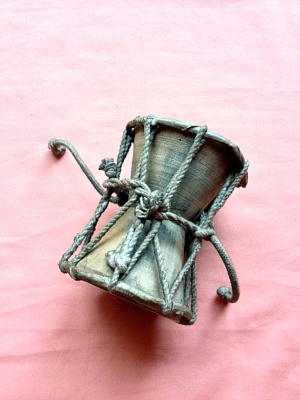News
-
 Pranayama workshop, Mar 1-7
Pranayama workshop, Mar 1-7
-
 21-day Pranayama challenge
21-day Pranayama challenge
-
 Nāda meditation workshop, January 8-12
Nāda meditation workshop, January 8-12
-
 April 3, Navaratri with Yogi Matsyendranath Maharaj, Australia, Queensland
April 3, Navaratri with Yogi Matsyendranath Maharaj, Australia, Queensland
-
 March 17, 2020. Purifiying Pranayama With Yogi Matsyendra Nath
March 17, 2020. Purifiying Pranayama With Yogi Matsyendra Nath
-
 November 2019, Tantra Workshop Series in Argentina
November 2019, Tantra Workshop Series in Argentina
-
 Workshop in Gualeguaychu
Workshop in Gualeguaychu
-
 17-18 November 2018, Yogi Matsyendranath in Źarate (Argentina)
17-18 November 2018, Yogi Matsyendranath in Źarate (Argentina)
-
 15-16 November 2018, Yogi Matsyendranath visit to Uruguay
15-16 November 2018, Yogi Matsyendranath visit to Uruguay
-
 12 Nov 2018, Lecture at USAL (Salvador University)
12 Nov 2018, Lecture at USAL (Salvador University)
-
 10-11 November 2018, Workshops in Quilmes and La Plata (Argentina)
10-11 November 2018, Workshops in Quilmes and La Plata (Argentina)
-
 8 November 2018, Open conference in Necochea (Argentina)
8 November 2018, Open conference in Necochea (Argentina)
-
 2,3,4 November 2018 - Participating in XVI Retreat International of Yoga and Meditation
2,3,4 November 2018 - Participating in XVI Retreat International of Yoga and Meditation
-
 Programme in Québec (Canada) 13-16 June
Programme in Québec (Canada) 13-16 June
-
 Melbourne Book Launch
Melbourne Book Launch
-
 4-years Summer Program
4-years Summer Program
-
 Biography of a Russian Yogi
Biography of a Russian Yogi
-
 November 2017, Visit of Yogi Matsyendranath to Argentina
November 2017, Visit of Yogi Matsyendranath to Argentina
-
 Satsangs of Yogi Matsyendranatha Maharaj in Berlin
Satsangs of Yogi Matsyendranatha Maharaj in Berlin
-
 Seminars and trainings in June-July 2015 (France)
Seminars and trainings in June-July 2015 (France)
Damaru
Damaru

डमरु, ḍamaru
It is a little drum in form of sandglass. In some pictures the damaru is tied to the trishul. Shiva, who is often depicted in dancing form known as Nataraja, holds the damaru in his hand. Yogis use the damaru in various rituals especially in mystical and esoteric ones because its parts symbolize ephemeral character of human being. The cords with knots to the ends are around the waist of the damaru. As the player waves the drum using a twisting wrist motion, the knots beat on the drumhead.
Naga-babas and other Shaivas carry the damaru. They are playing it while worshiping and begging. The damaru and its sound have a lot of symbolic meanings:
- The drumbeats of the damaru symbolize the creation and the destruction of the universe;
- Shiva’s devotees think that the sound of the damaru is Nada. This sound arose from the void of Nothing. Shiva began the creation of the universe in the rhythm of the damaru and the world was created through his dance.
- The upper part of the damaru symbolizes the male energy (the Lingam), and the lower part symbolizes the female energy (the Yoni). The creation of the world begins when the lingam and yoni meet at the midpoint of the damaru, and the destruction takes place when they separate from each other.
- Shiva makes sound through the damaru and transmits it to his son Ganesha who is the famous player of the big drum, and so the music comes out.
- The sound of damaru represents the power of heartbeat.
- It is believed that Sanskrit language was recognized by the drumbeats of the damaru. Its sound is the words of Vedas.
The damaru is used in the puja as the attribute of deity or as the particular object of the worship. Also it accompanies the bell or other instrument during the ritual.
ḍamaru mantra
sat namo ādeś | gurujī ko ādeś | oṁ gurujī | oṁkār śabd ūpr kailāś parvat, kailāś parvat ūpr gagan maṇḍal chāyā gagan maṇḍal me nād ḍamaru kā upāyā | nāth niranjan śūnya me dhyān lāgyā | jyoti trikuṭī bhaī soham se mārg pāyā | kaho re bālkā yah ḍamaru kaisā āyā | oṁ gurujī ād puruś ne lāyā piche sidh sādhak ne pāyā | nād oṁkār guru jñān ḍamaru rākhe yogī nirvān | dhūnī pāṇī ḍamaru rākhiyo sāth hamārā | sādh sidh kī bāṇī, ḍamaru bāje oṁkār bāṇī | ḍamaru gāje ḍamaru bāje, ḍamaru tin lok ko tāre | itnā ḍamaru mantra sampūrṇ bhayā | śrī nāth jī guru jī ko ādeś | ādeś |
Let us to realize the Will of Supreme Being, let us to realize the Guru's Will. Omkara sound is on the top of Kailash mount, on the top of Kailash, into heavenly space, the nada sound is heard as a part of damaru. Dhyana is performed in the void of the Purest Nath. There is the way - "I am He" - in the light of trikuta (ajna-chakra). The speech of shining youth is something that comes from damaru. Bows to Guruji Adipurusha who is manifested in the siddha sadhakas. The Omkara sound along with knowledge of Guru, located in damaru, grant pacification to a yogi. Our damaru is always with dhuni and (consecrated) water. The speech of siddha is perfect and the damaru sound is similar to Omkara. The light of damaru (similar to lightning) and its sound are illuminate the three worlds. Such is the damaru mantra. Shri Nathaji Guruji Adesh!

